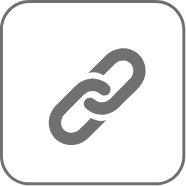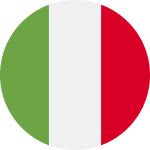What is Card Sorting, and How Can It Improve My Website’s Usability?
- UI/UX Design
What is Card Sorting, and How Can It Improve My Website’s Usability?
As the online presence of brands become increasingly important in this digital age, it is essential for businesses to ensure that this important touchpoint effectively addresses the needs of its users. User experience of a website is essential in building rapport with an individual and determining whether one leaves the website browsing experience with a positive or negative impression.
When determining how to improve Creativeans’ previous website built back in 2015, it was important for us to think about what kind of information design would best meet the needs of our users. Being user experience centric in our design, we tapped on card sorting to understand how to better organise and structure the content on our website.
What is Card Sorting?
Card sorting is a simple user experience research method that uncovers how a user’s domain knowledge is structured. It helps provide insight into how an Information Architecture (IA) should be designed to effectively match a user’s expectations. In a gist, IA can be understood as how content is being structured and organised on a site or platform.
Richard Saul Wurman, an American architect and graphic designer who is a key figure in the IA field once said, “The organisation of information actually creates new information.”.
Card sorting is a useful tool to design or evaluate the IA of a site. A typical card sorting session tasks participants to organise content labels or topics into categories based on what makes the most sense to them. More exploratory card sorting sessions may also involve participants in helping to label the categories they have grouped the topics into.
Despite being reasonably straightforward to conduct a card sorting session, the insights obtained will equip you with key information to better build a content structure for your website that best addresses the needs of your users.
Understanding the mental model of your targeted users would also enable you to better decide on what content should be displayed on your homepage, as well as how to label your navigation categories such that users of your website would be able to easily find the content that they are searching for.
Types of Card Sorting:
There are two main ways of Card sorting, namely (1) an open card sort and (2) a closed or reverse card sort.
An open card sort gets participants to organise content labels from your site into categories based on what makes sense to them. They then label these categories based on a criterion that best encompasses and describes the content in each group. This form of card sorting is more exploratory in nature and provides better understanding into the thinking process a user undergoes when grouping content. As it gives participants more flexibility in naming and forming their own categories, this form of card sorting is also better for the starting or generative phase of a project. However, on the flipside, this flexibility may also result in a wide variety of answers that may not always result in clear patterns.
On the other hand, closed card sorting gets participants to organise topics into pre-defined categories. This method of card sorting focuses more on understanding how users sort content into these pre-defined categories. This method of card sorting is more beneficial for the evaluative phase of a project as it is more controlled. Grouping patterns are also more likely to emerge in this method of card sorting.
When choosing which method of card sorting to use, it is important to first determine the intended purpose of conducting a card sort. Accordingly, a combination of the two methods may also be utilised. This usually starts off with a closed card sort but allows participants to create new categories for content labels that they were unable to place under any of the pre-defined categories.
How then do you go about conducting an open card sorting session?
- Select around 40 items that encompasses the main content of your site, and list them out one per card. Avoid using topics that contain the same words as this could mislead participants into identifying them as belonging to the same category.
- Shuffle the cards and hand them over to your participants to begin grouping the cards together. For cards which participants are unsure of, ask them to leave it to the side. It is better to have an “unknown” set of cards then to randomly sort them into the categories. In addition, throughout this process, participants are allowed to shift cards around, or change the category piles as they go through the card sorting process.
- After the participant is satisfied with the groupings, ask him/her to write down a category name for each of the groups.
- Debriefing after a card sorting session is optional, however, this is helpful in obtaining qualitative data that would provide more insight into the thought processes of your participants. Asking for the rationale behind the groups created or if there were any items that were particularly difficult or easy to place would allow you to better evaluate and assess your website’s content.
- Repeat the above steps with more participants. A total of 15 to 20 participants is a good number to detect patterns from your participants’ mental model. Recruiting more than 20 participants is not advisable as each additional participant would result in diminishing returns in terms of usability problems found as shown in the graph below.

(credit: https://www.nngroup.com/articles/why-you-only-need-to-test-with-5-users/)
Linking back to our own experience when redesigning our website, we utilised a closed card sort to evaluate and improve on our previous IA. Through the insights gained, we were able to successfully design a new IA for our site that structured and organised our content in a manner that made the most sense to our target audience. This helped to improve our website’s usability by better meeting the needs of our users.
Related Article: How to Use Heat Maps to Improve Your Website User Experience
As the online presence of brands become increasingly important in this digital age, it is essential for businesses to ensure that this important touchpoint effectively addresses the needs of its users. User experience of a website is essential in building rapport with an individual and determining whether one leaves the website browsing experience with a positive or negative impression.
When determining how to improve Creativeans’ previous website built back in 2015, it was important for us to think about what kind of information design would best meet the needs of our users. Being user experience centric in our design, we tapped on card sorting to understand how to better organise and structure the content on our website.
What is Card Sorting?
Card sorting is a simple user experience research method that uncovers how a user’s domain knowledge is structured. It helps provide insight into how an Information Architecture (IA) should be designed to effectively match a user’s expectations. In a gist, IA can be understood as how content is being structured and organised on a site or platform.
Richard Saul Wurman, an American architect and graphic designer who is a key figure in the IA field once said, “The organisation of information actually creates new information.”.
Card sorting is a useful tool to design or evaluate the IA of a site. A typical card sorting session tasks participants to organise content labels or topics into categories based on what makes the most sense to them. More exploratory card sorting sessions may also involve participants in helping to label the categories they have grouped the topics into.
Despite being reasonably straightforward to conduct a card sorting session, the insights obtained will equip you with key information to better build a content structure for your website that best addresses the needs of your users.
Understanding the mental model of your targeted users would also enable you to better decide on what content should be displayed on your homepage, as well as how to label your navigation categories such that users of your website would be able to easily find the content that they are searching for.
Types of Card Sorting:
There are two main ways of Card sorting, namely (1) an open card sort and (2) a closed or reverse card sort.
An open card sort gets participants to organise content labels from your site into categories based on what makes sense to them. They then label these categories based on a criterion that best encompasses and describes the content in each group. This form of card sorting is more exploratory in nature and provides better understanding into the thinking process a user undergoes when grouping content. As it gives participants more flexibility in naming and forming their own categories, this form of card sorting is also better for the starting or generative phase of a project. However, on the flipside, this flexibility may also result in a wide variety of answers that may not always result in clear patterns.
On the other hand, closed card sorting gets participants to organise topics into pre-defined categories. This method of card sorting focuses more on understanding how users sort content into these pre-defined categories. This method of card sorting is more beneficial for the evaluative phase of a project as it is more controlled. Grouping patterns are also more likely to emerge in this method of card sorting.
When choosing which method of card sorting to use, it is important to first determine the intended purpose of conducting a card sort. Accordingly, a combination of the two methods may also be utilised. This usually starts off with a closed card sort but allows participants to create new categories for content labels that they were unable to place under any of the pre-defined categories.
How then do you go about conducting an open card sorting session?
- Select around 40 items that encompasses the main content of your site, and list them out one per card. Avoid using topics that contain the same words as this could mislead participants into identifying them as belonging to the same category.
- Shuffle the cards and hand them over to your participants to begin grouping the cards together. For cards which participants are unsure of, ask them to leave it to the side. It is better to have an “unknown” set of cards then to randomly sort them into the categories. In addition, throughout this process, participants are allowed to shift cards around, or change the category piles as they go through the card sorting process.
- After the participant is satisfied with the groupings, ask him/her to write down a category name for each of the groups.
- Debriefing after a card sorting session is optional, however, this is helpful in obtaining qualitative data that would provide more insight into the thought processes of your participants. Asking for the rationale behind the groups created or if there were any items that were particularly difficult or easy to place would allow you to better evaluate and assess your website’s content.
- Repeat the above steps with more participants. A total of 15 to 20 participants is a good number to detect patterns from your participants’ mental model. Recruiting more than 20 participants is not advisable as each additional participant would result in diminishing returns in terms of usability problems found as shown in the graph below.

(credit: https://www.nngroup.com/articles/why-you-only-need-to-test-with-5-users/)
Linking back to our own experience when redesigning our website, we utilised a closed card sort to evaluate and improve on our previous IA. Through the insights gained, we were able to successfully design a new IA for our site that structured and organised our content in a manner that made the most sense to our target audience. This helped to improve our website’s usability by better meeting the needs of our users.
Related Article: How to Use Heat Maps to Improve Your Website User Experience
YOU MIGHT ALSO LIKE

Singapore Web Design Studio: Creativeans’ Digital Edge
- Branding
- Business Design
- Packaging Design
- Product Design

What is Brand Ladder?
- Topics
- Branding

The Art of Problem-Solving: Branding and Design for Indonesian Businesses
- Branding
- Business Design
- Packaging Design
- Product Design



















 Singapore
Singapore  Indonesia
Indonesia  Italy
Italy